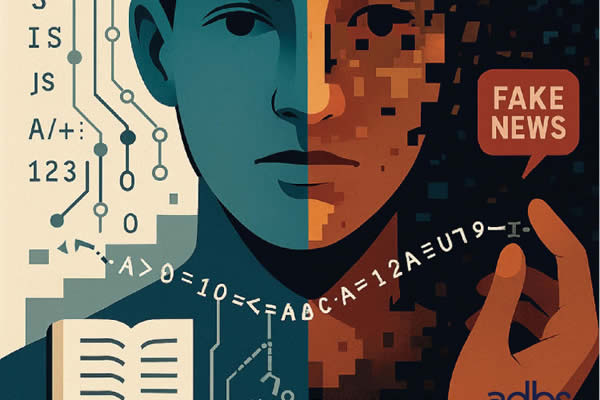One of the misconceptions about AI is the concept of ‘adoption’. In Science and Technology Studies (STS), adoption is about negotiating, appropriating, and domesticating tech into routines and identities. Use is just interaction; practice is integration into professional routines (it is not adoption but can lead to it).
Use, practice and adoption require a nuanced approach that draws on a rich and often overlooked body of literature – notably the French sociology of use and key contributions from Science and Technology Studies (STS). Far from being interchangeable, the terms use, practice, and adoption have different theoretical meanings that reflect different understandings of how technologies are integrated into professional routines and workflows. Examining these foundations is more necessary than ever, especially as AI has permeated journalism in ways that blur the line between practical, meaningful applications and those driven more by hype.
Therefore, the adoption of AI in newsrooms is not simply about how the technology is ‘used’ or ‘practised’ but how it is described – often in ways that gloss over critical nuances. These descriptions lead to misunderstandings about the subtle differences well documented in the literature. This blog post is not intended to reinvent the wheel but to help explain the complexities of AI adoption in journalism. It is based on my PhD work, where I studied how automated news systems were used or practised while it was still a nascent phenomenon, pretty far from the current hype.
Use
‘Use’ is a multidimensional process involving interactions between individuals and technical objects and usage trajectories shaped by the user’s personal and social history. It differs from ‘use’, which is more functional and utilitarian. However, the term ‘use’ is sometimes ambiguous as it can encompass employment, utilisation, practice, or appropriation.
The logic of use arises from a confrontation between the instrument, its function and the user’s project. Use can take different forms and can be understood both as a ‘natural’ social practice and as the use of an object that reveals its social meaning, subjectively constructed by the user-actor.
Michel de Certeau sees it as a form of everyday creativity in which individuals transform cultural products according to their needs, thus escaping the dominant production structures. Users are not passive consumers; they reconfigure available resources to meet personal aspirations, contributing to a « common and everyday culture ». Social uses are seen as use patterns integrated into larger social structures. Technical use, on the other hand, refers to the utilitarian use of technology. According to Akrich, the formation of uses requires time and cannot be automatically deduced from the design process.
In English, the words « use » and « usage » are often used interchangeably, but they can have slightly different connotations depending on the context:
- Use refers to the act of using something for a specific purpose. It tends to be more straightforward and action-oriented.
- Usage tends to focus more on the way or frequency with which something is used. It can also refer to the customary or established way of using something.
Key authors: Akrich, de Certeau, Flichy, Millerand, Proulx.
Practice
Practice is a more elaborate and complex concept, encompassing the use of technologies (or ‘us’) and individuals’ behaviours, attitudes and representations towards the tool. As social constructs, practices depend on how users perceive the technical object. This concept overlaps with ‘use’ when practices emerge from how people relate to technology.
De Certeau’s theory of practice highlights the importance of everyday activities – such as walking, reading and cooking – as forms of action that can be subversive and resistant. He contrasts ‘strategies’, which are planned and imposed by those in power, with ‘tactics’, which are the improvised responses of individuals who resist or reinterpret these dominant systems. Through this lens, everyday practices become acts of appropriation and resistance against established structures.
Key authors: Chambat, de Cereau, Jeanneret, Jouët.
Appropriation
Appropriation refers to how individuals actively adapt and transform objects or technologies to suit their personal or social needs. It is central to de Certeau’s theory. He compares consumers to « poachers » who take fragments of cultural products and reinterpret them. This appropriation process is a form of resistance, as users impose their meanings on objects, often against the original intention of the producer or designer.
For Proulx (2005), appropriation is a « progressive internalisation of technical and cognitive skills by individuals and groups who use these technologies daily ». Adoption is seen as a prerequisite for appropriation, which Jouët (2000) defines as the constitution of « a self ». The conditions for the appropriation of a technological object, therefore, include the mastery of its technical and cognitive aspects, its significant integration into the user’s practices, its repeated use, which allows for creative possibilities, and its social appropriation, provided that the uses are correctly represented in the processes.
Appropriation can be individual, where an object is integrated into daily life and adapted to personal needs, or collective, where a group uses a technical system to increase autonomy.
Key authors: Boudokhane, de Certeau, Flichy, Proulx, Roux.
Adoption
Adoption refers to the process through which individuals accept and integrate new technologies into their lives. It involves both the mental acceptance (or symbolic adoption) of an idea and the decision to implement it in practice. Although de Certeau does not specifically address ‘adoption’, his framework implies that it is an active process in which individuals creatively reinterpret technologies or cultural goods within their daily routines. Adoption is not a passive act; it involves a re-invention by the user.
The adoption of a given innovation also depends on achieving critical mass, which occurs through contagion and saturation
Key authors: Akrich, Boudokhane, Klonglan & Coward, Rogers.
| Concept | Focus | Scope | Example |
|---|---|---|---|
| Use | Employing technology for specific tasks | Individual or task-specific | Use Twitter to post breaking news updates. |
| Practice | Social norms, routines, and workflows associated with technology | Cultural/organizational contexts | Journalists routinely practice on social media platforms to source stories and engage with audiences. |
| Appropriation | Active adaptation and transformation of technology for personal or collective needs | Individual or collective adaptation | Journalists adapting AI tools to their editorial practices, reinterpreting them for specific workflows. |
| Adoption | Acceptance and integration of technology into broader workflows and strategies | Strategic/system-wide | News organizations adopt AI tools for automated content generation or data-driven recommendations. |
For the complete list of references, please check the online database used for my thesis: https://ohmybox.info/dbthese/




